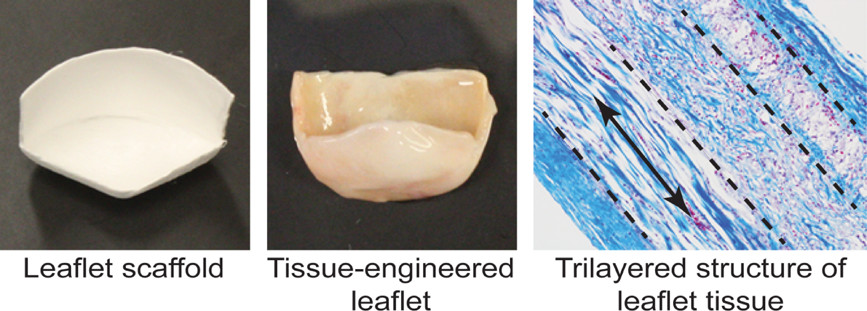January 17, 2022

A Mizzou Engineer is developing biodegradable heart valve scaffolds that can replace damaged valves, and grow and function as native tissue valves.
Soumen Jana, an assistant professor of biomedical, biological and chemical engineering, is designing scaffold that mimics the make-up and mechanics of native heart valves. The goal is to offer an alternative to mechanical and bioprosthetic heart valves currently on the market, which require lifelong medication and can have possible complications.
“We are working on making heart valve scaffolds that can be implemented in a person who has some kind of heart disease or valve problem,” Jana said. “Our goal is to completely mimic the structure, shape and size.”
In his latest study, Jana focused on heart valve leaflets, which are flaps that open and close to keep blood flowing in the right direction. Faulty or diseased leaflets are common causes of problems such as stroke and heart failure.
Jana used a polymer fibrous material that is biocompatible, biodegradable and FDA approved. The scaffold, like native leaflets, has three layers: circumferentially, randomly and radially oriented layers.
To replicate the thickness and mechanical properties of each of the three layers, the team developed an electrospinning system.
“To make the three layers, we had to use a special mechanism,” Jana said. “We made our own customized setup and developed custom instruments.”
In an in-vivo study involving rats, Jana showed that the leaflet scaffolds allowed the body to produce new leaflets. The scaffolds essentially served as a nest that guided cells to form the fibrosa, spongiosa and ventricularis layers of native leaflets.
The leaflets grew with the dissolution of scaffolds leaving no toxins or negative side effects.
Jana outlined his findings in Applied Bio Materials, a journal of the American Chemical Society, this past fall.
He and his graduate student Yuriy Snyder are now working on developing a whole heart valve scaffold that should work similarly.